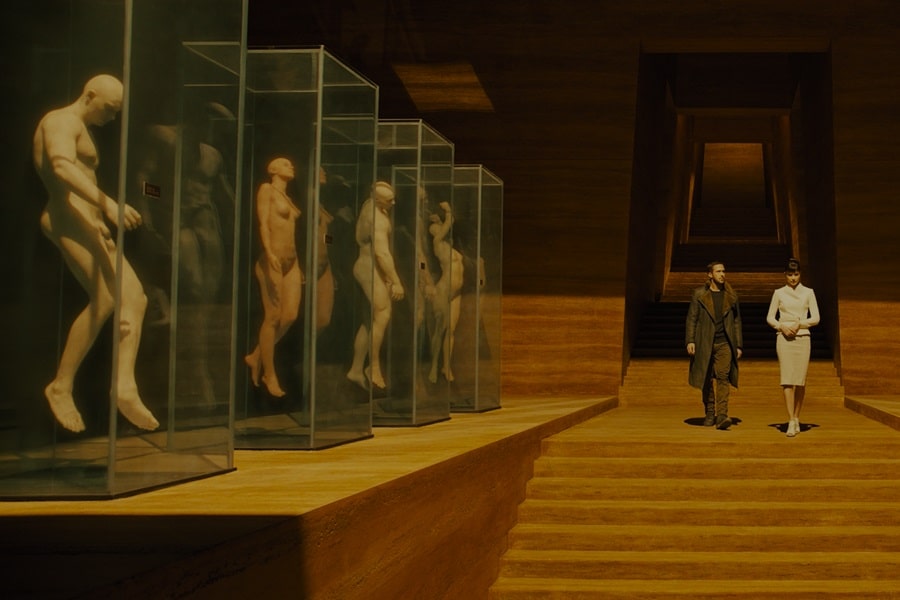
Crime and Science Fiction
Dark alleys and darker motives, where the gleam of neon lights barely scratches the surface of the abyss—that’s where crime and science fiction find their most potent intersection. This isn’t about the straightforward whodunits or the clear-cut heroes versus villains.
It’s about the murky depths where morality gets as twisted as a double helix and technology blurs the lines between possible and unimaginable.
Take “Blade Runner” (1982), based on Philip K. Dick’s “Do Androids Dream of Electric Sheep?” (1968). Here, the hunt for rogue replicants opens up a Pandora’s box of existential dread. The detective, Deckard, navigates a labyrinth of bioengineered beings and neon-soaked streets, where the question isn’t just about who committed the crime, but what it means to be human in a world where the line between man and machine is vapor-thin.
Or consider “Minority Report” (2002), another adaptation of Dick’s work, where the concept of pre-crime—stopping criminals before they act based on foreknowledge—paints a chilling picture of free will and determinism. The narrative follows John Anderton, a cop caught in the gears of a future justice system that’s as infallible as it is inhuman. The twisty plot weaves through a society that’s traded privacy for security, questioning whether the future is something to be seen or something to be changed.
“Altered Carbon” (2018), based on Richard K. Morgan’s novel, throws viewers into a future where consciousness can be transferred to different bodies, making death nearly obsolete for those who can afford it. The story of Takeshi Kovacs unravels a murder mystery that’s as much about the crime as it is about the societal divides created by this technology. It’s a world where life and identity are as disposable as the bodies that house them, and the pursuit of justice is a slippery slope in a society that’s lost sight of what it means to be mortal.
Then there’s “The City & The City” (2009) by China Miéville, adapted into a miniseries in 2018. It’s a detective story set in two cities that occupy the same space but are perceived differently by their inhabitants, thanks to a strict set of rules known as “unseeing.” Investigating a murder that challenges these boundaries, Inspector Tyador Borlú delves into a conspiracy that blurs the line between these divided cities. This narrative doesn’t just explore a crime; it questions the very nature of reality and the unseen forces that shape it.
“Neuromancer” by William Gibson, though not adapted into a screen version as of my last update, can’t be ignored in this discourse. The novel, heralding the cyberpunk genre, introduces a world where information is the ultimate currency and hackers the new-age outlaws. The protagonist, Case, finds himself entangled in a web of corporate espionage, artificial intelligence, and digital consciousness. Gibson’s vision of crime isn’t bound by the physical world; it’s about the theft of data, identity, and even reality itself.
These stories, each in their own way, peel back the layers of a future society where the advancements of science and technology have reshaped the landscape of crime and justice. They don’t just offer a glimpse into potential futures; they hold up a mirror to present-day anxieties about technology’s role in our lives and the ethical dilemmas that come with it.
It’s a genre that thrives on the edge of the conceivable, pushing the boundaries of what society understands as crime and punishment. In these narratives, the detectives, hackers, and outlaws navigate a world that’s as complex as the human psyche, driven by desires that are timeless yet refracted through the prism of speculative science. The appeal lies not just in solving the crime, but in unraveling the societal and philosophical quandaries that these future worlds present.
Crime in science fiction is more than a plot device; it’s a lens through which we examine the human condition. As technology advances at a breakneck pace, these stories become cautionary tales about the potential for innovation to outstrip morality. They challenge readers and viewers to consider not just what technology can do, but what it should do, and who gets to make those decisions.
This confluence of crime and science fiction serves as a stark reminder that the darkest crimes aren’t just those committed in the shadows, but those that lurk in the human heart, magnified by the power of technology. It’s a realm where the quest for justice is as much about navigating the moral quagmires of the future as it is about solving the crime itself.
Thus, these narratives are more than mere entertainment. They are vital explorations of the ethical and existential dilemmas facing a society on the cusp of technological transcendence. They force us to confront the uncomfortable reality that, in the end, the most dangerous creations are not the machines or the AI, but the flawed humans who wield them.
In the darkness of these stories, there’s a glimmer of understanding—a beacon that guides us through the fog of progress and reminds us that at the heart of every crime, whether in the gritty streets of a dystopian future or the cold glow of a computer screen, lies the unchanging nature of humanity. It’s a journey through the shadows, where the only certainty is that the line between man and machine, right and wrong, is as mutable as the future itself.
More Sci-fi Thriller Features
Time Travel Elements
The Machine, Busting the Space-Time Continuum, and Immortality
Space Opera Thrillers
Nail-biting tension in worlds of spaceships and doom
Artificial Intelligence in Thrillers
AI and Identity in Thrillers



